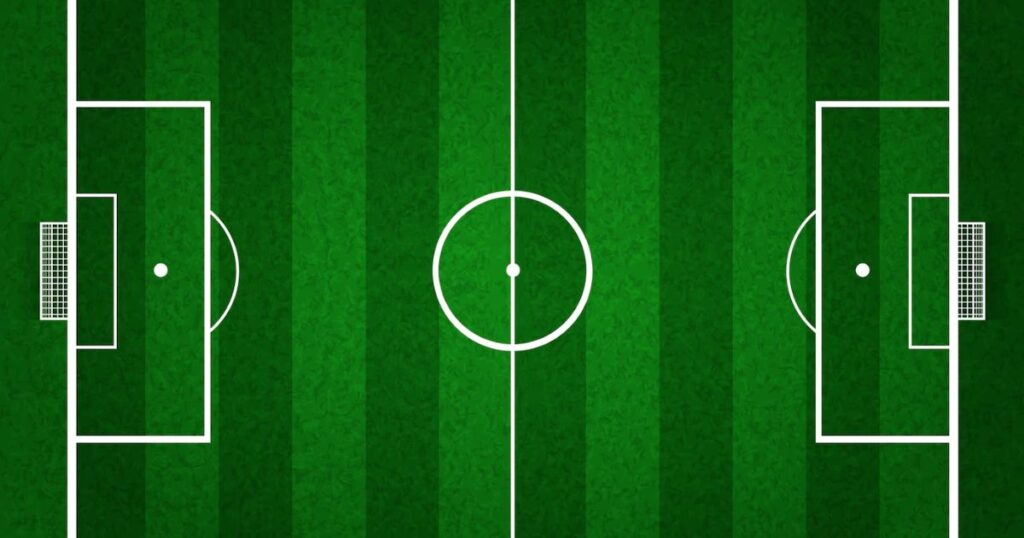Ever wondered just how big 50 feet really is? From towering buildings to massive marine creatures, understanding this dimension helps us grasp the scale of things around us. Let’s explore these impressive measurements through familiar examples that bring this size to life.
How Long is 50 Feet
When visualizing 50 feet, think about the length of a bowling lane or three cars parked bumper to bumper. This distance equals precisely 600 inches or 15.24 meters, making it a significant span in both everyday life and construction projects.
Professional architects and builders regularly work with this measurement when designing spaces that need to accommodate large groups or equipment. Whether planning a small warehouse or arranging office spaces, understanding this scale proves invaluable.
The practical applications of this measurement extend beyond construction into event planning, landscape design, and various industrial applications. It’s a distance that often defines the boundaries of functional spaces in our daily environments.
How Does 50 Feet Appear in Height?
In terms of vertical scale, 50 feet reaches the height of a typical 5-story building. This provides a tangible reference point when looking up at urban landscapes or considering vertical distances.
Standing at ground level and gazing upward, this height represents the equivalent of stacking five average-sized living rooms on top of each other. The perspective from below can be quite impressive, especially when considering structural engineering and architectural design.
Modern buildings often utilize this height for mid-sized commercial structures, making it a common sight in suburban business districts. Understanding this vertical scale helps in appreciating both natural and manufactured structures around us.
How Far is 50 Feet to Walk?
Walking 50 feet takes about 20 seconds at an average pace, making it a relatively short but noticeable distance. This span represents a common length for grocery store aisles or the distance between parking spots and store entrances.
Professional space planning often incorporates this measurement when designing walkways and corridors. It’s long enough to create meaningful separation between areas while remaining easily traversable.
The distance proves particularly relevant in retail environments and public spaces where foot traffic flow needs careful consideration. Understanding walking distances helps create more efficient and comfortable spaces for everyone.
10 Things That Measure 50 Feet
Let’s explore specific examples that help illustrate this dimension in practical terms. Each of these items offers a unique perspective on understanding and visualizing 50 feet in different contexts.
1. Yacht Length

The average luxury yacht spans approximately 50 feet in length, making it a perfect example of this dimension in maritime applications. These vessels represent significant investments in marine engineering and recreational boating excellence.
Marine architects and boat builders use these measurements as a standard benchmark for mid-sized luxury vessels. The 50-foot length provides optimal balance between comfortable accommodations and manageable operating requirements.
This size category remains particularly popular among experienced boaters and charter services, offering sufficient space for extended cruising while maintaining maneuverability in various marine environments. Professional maritime services regularly work with these dimensions when planning dock spaces and maintenance facilities.
2. Football Field Width

A regulation high school football field measures exactly 50 feet from the inner boundary of one sideline to the hash marks, providing another familiar sports-related reference. This standardized measurement plays a crucial role in game strategy and field management.
Athletic facility managers and groundskeepers work with these dimensions when maintaining playing surfaces and planning field layouts. The precise measurement ensures consistent play conditions and proper spacing for game officials and team activities.
Understanding this dimension helps coaches develop effective plays and helps players maintain proper positioning during games. Sports facility designers regularly incorporate these measurements when planning new athletic complexes or renovating existing fields.
3. 5 Ping Pong Tables

Standard ping pong tables measure approximately 10 feet in length, making five tables arranged end-to-end an excellent visualization of 50 feet. This comparison proves particularly useful in indoor spaces and recreational facilities.
Professional tournament venues often utilize multiple tables, making this measurement relevant for event planning and space allocation. The precise layout of these tables requires careful consideration of player movement and spectator viewing areas.
Facility managers and event coordinators regularly work with these dimensions when organizing competitions or setting up recreational spaces. Understanding this scale helps optimize room layouts and ensure proper spacing between playing areas.
4. The Hollywood Sign’s Height

The iconic Hollywood Sign, standing prominently since 1923, measures 45 feet in height, providing a close reference to our 50-foot scale. This cultural landmark serves as a familiar benchmark for understanding vertical dimensions.
The sign’s placement on Mount Lee makes its height even more impressive, creating a visual anchor in the Los Angeles landscape. Its scale was carefully chosen to ensure visibility from significant distances across the city.
Engineers and maintenance teams work with these dimensions regularly when maintaining and preserving this historic structure. The sign’s height contributes to its status as a recognizable symbol of American culture.
5. Basketball Court Width

The standard NBA and international basketball court width measures exactly 50 feet, while extending 94 feet in length. This standardized measurement creates the perfect balance for competitive play and strategic movements.
Professional basketball facilities maintain these precise dimensions to ensure consistent play across all venues. The width allows for optimal spacing between players and provides enough room for defensive formations and offensive plays.
Understanding this measurement helps appreciate how the court’s dimensions influence game strategy and player positioning. Coaches often use these measurements to design plays and coordinate team movements effectively.
6. 5x Alligators

In the Southeastern United States, American alligators typically grow to about 10 feet in length, making five adult alligators lined up nose-to-tail roughly equivalent to 50 feet. This natural comparison helps visualize the distance in wildlife contexts.
Wildlife researchers and conservation experts work with these measurements when studying habitat requirements and behavior patterns. Understanding these dimensions proves crucial for designing appropriate enclosures and maintaining safe distances.
The size relationship between individual alligators and our 50-foot reference helps educational programs explain concepts of scale and measurement through familiar examples.
Read Also: 11 Things That Are 30 Feet Long or Big
7. Semi-Trailers

Standard semi-trailers typically measure 48 feet in length, nearly matching our 50-foot benchmark. These vehicles form the backbone of modern logistics systems and freight transportation.
The design of these trailers maximizes cargo capacity while adhering to road safety standards and regulations. Their length allows for efficient loading and unloading processes at warehouses and distribution centers.
Transportation planners and facility designers regularly work with these dimensions when creating loading docks and maneuvering areas. The standardized length helps optimize shipping routes and cargo organization.
8. 5x Siberian Tiger

The Siberian tiger, also known as the Amur tiger, reaches lengths of about 10 feet, making five tigers lined up equal to our 50-foot measurement. These magnificent creatures provide another natural reference point for understanding scale.
Wildlife conservationists use these measurements when designing enclosures and studying habitat requirements. The impressive size of these tigers helps explain their territorial needs and hunting patterns.
Understanding their scale aids in conservation efforts and habitat preservation planning. Their size demonstrates the relationship between predator dimensions and ecosystem requirements.
9. Two and a Half Containers

Standard shipping containers come in 20-foot and 40-foot lengths, making two and a half 20-foot containers approximately 50 feet. This measurement plays a crucial role in modern logistics systems and international trade.
Port facilities and cargo yards utilize these dimensions when planning storage areas and organizing container arrangements. The standardized nature of these containers makes them excellent reference points for understanding industrial-scale measurements.
Transportation planners and shipping companies regularly work with these dimensions when coordinating cargo movement and storage solutions. Understanding container measurements helps optimize space utilization in ports and warehouses.
10. Grey Whale

The majestic grey whale reaches lengths of approximately 50 feet, providing a remarkable natural example of this scale. These marine mammals, frequently spotted in the shallow coastal waters of the North Pacific, demonstrate the impressive dimensions found in nature.
Marine biologists and whale watching operators use these measurements to identify and track different species. The length of grey whales helps researchers understand their habitat requirements, migration patterns, and biological needs.
Conservation efforts often reference these dimensions when establishing protected areas and determining safe distances for boats and observers. Understanding whale size proves crucial for maintaining appropriate viewing distances and ensuring their protection.
11. Tape Measure

Professional-grade tape measures often extend to 50 feet, making them essential construction tools for accurate measurements. These devices provide precise reference points for everything from home improvement to large-scale construction projects.
Contractors and builders rely on these tools daily for ensuring accurate dimensions in their work. The portability and reliability of extended tape measures make them invaluable for both professional and DIY projects.
The ability to quickly measure 50 feet with these tools helps in planning layouts, verifying distances, and maintaining construction standards. Their widespread use has made them a standard reference point for understanding practical measurements.
12. A 5 Story Building

A typical 5-story building reaches approximately 50 feet in height, with each floor averaging 10 feet including structural elements. This height represents a common sight in mixed-use urban landscapes and residential areas.
Modern construction techniques optimize these vertical spaces to accommodate both living areas and mechanical systems. The height allows for comfortable ceiling heights while maintaining efficient use of vertical space.
Building codes and zoning regulations often reference this height as a standard benchmark for mid-rise structures. It represents an efficient balance between usable space and structural requirements.
Additional Considerations for 50-Foot Measurements
Practical Applications in Modern Design
Architects and urban planners frequently work with 50-foot measurements when designing public spaces and buildings. This dimension often represents optimal distances for visibility, accessibility, and functional space allocation.
Modern construction projects utilize this scale for creating efficient workflow patterns and comfortable human environments. Understanding this measurement helps in developing spaces that balance functionality with human comfort.
The application of 50-foot spans appears regularly in parking lot designs, retail spaces, and public gathering areas. This measurement has proven particularly useful in creating spaces that feel neither cramped nor overly expansive.
Safety and Regulation Standards
Many safety regulations and building codes reference 50-foot measurements for emergency access and escape routes. This dimension helps establish standard distances for fire safety equipment placement and emergency vehicle access.
Industrial safety guidelines often incorporate this measurement when determining safe operating distances and equipment spacing. Understanding these dimensions proves crucial for maintaining workplace safety and regulatory compliance.
Read Also: 12 Things That Are Approximately 80 Feet Long
Conclusion
The significance of 50 feet extends far beyond simple measurement, influencing design decisions across numerous fields including urban planning, architecture, and natural conservation. This dimension represents a crucial benchmark in both natural and built environments.
From the impressive length of a grey whale to the practical span of a basketball court, these examples demonstrate how this measurement shapes our world. Understanding this scale helps professionals and enthusiasts alike make informed decisions about space utilization and design.
Whether considering the height of buildings, the length of vehicles, or the size of wildlife, the 50-foot measurement continues to serve as a valuable reference point. Its applications in modern construction, safety regulations, and environmental planning underscore its enduring importance in our daily lives.
